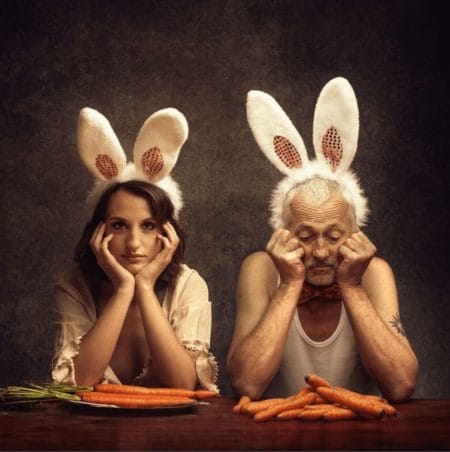Artistic creativity doesn't have to be expensive. Many everyday household remedies can help amateur artists create impressive paintings, collages, or sculptures while staying within budget. Even simple household products like vinegar for cleaning brushes or salt for textured effects offer surprising solutions to typical studio challenges.
Baking soda, baking powder, and nail polish remover have proven particularly useful. Even baking soda offers surprising possibilities for odor control. These practical tricks open up new creative avenues and prove that high-quality art doesn't necessarily require expensive materials.
With the right tips, you can achieve professional results without breaking the bank. These environmentally friendly methods are also gentler than chemical alternatives, making them accessible to everyone. The following sections provide an overview.

Photo by svklimkin, via Pixabay
Odor control and cleaning: Natural helpers in the studio
Nail polish remover helps thoroughly clean brushes and work surfaces . Baking aroma offers a surprising solution to unpleasant odors—simply mix the aroma into the paint, and instead of a pungent paint odor, your studio will smell of orange or other pleasant scents.
When it comes to gently cleaning artwork, the basic rule is: less is more. Gentle, dry cleaning protects the paint better than aggressive cleaning agents. Other effective options include vinegar for cleaning brushes, baking soda for stubborn odors, and warm soapy water for stubborn stains. These natural helpers create a pleasant working environment without chemical exposure and support effective odor control in the studio.
DIY colors and textures: Baking soda and baking powder as design aids
Baking soda and baking powder make it possible to inexpensively create chalk paints with an authentic look. These tried-and-true household ingredients are found in every household and offer an easy way to create interesting textures.
The baking soda is mixed with a little water to form a paste and then mixed with the desired color. The result is a matte, chalky surface, which is especially appreciated vintage projects , but also for more abstract artwork
Baking powder works according to the same principle and produces similar effects with a comparable surface texture. These mixing techniques open up new design possibilities and give works of art a unique surface texture and charisma.
Choose your basic equipment carefully: How to save on brushes and tools
An inexpensive brush set is the ideal foundation for aspiring hobby artists. Investing in a high-quality acrylic brush is also worthwhile. Synthetic brushes are best for acrylic paints, as they absorb the paint optimally and shed fewer bristles.
The rule of thumb is: artificial paint requires artificial brushes. Alternative tools such as painting knives, spatulas, or even simple pieces of wood like popsicle sticks significantly expand the creative possibilities. These unconventional tools enable interesting spray techniques and textured effects. Airbrush guns can also enrich experimental painting techniques and open up new forms of expression.
Acrylic painting for beginners: simple techniques and materials
Acrylic painting is considered an ideal introduction to painting because of its ease of use and versatility. These water-soluble paints dry quickly, are odorless, and can be easily mixed.
Beginners appreciate the adjustability and the opportunity to try out different techniques. In addition to traditional brushes, common household tools are ideal for experimental approaches. Sponges, combs, or paper towels create interesting textures and effects. Combining different tools allows for the development of individual painting techniques.
Discovering creative possibilities: The path to artistic development
Home remedies offer hobby artists wonderful opportunities for artistic development without straining the budget. From eliminating odors with baking soda to making your own chalk paints with baking powder, simple solutions have a big impact.
Nail polish remover also serves as a cleaning aid, demonstrating the versatility of these household remedies. These inexpensive alternatives prove that high-quality art is accessible to everyone.
Starting with acrylic paints and inexpensive brush sets allows you to try out different techniques and find your own style. Abstract painting offers the perfect setting for experimentation without the pressure to perform. With the right tips and a bit of creativity, you can achieve professional results and discover the joy of artistic creation.
At the same time, even with the best basic equipment, it's always important to maintain a creative environment. This often arises when the hobby artist asks themselves, "What inspires me?" Many studio spaces have been optimized in recent years with smart speakers or lighting solutions, such as those regularly featured homeandsmart
However, many people also find it helpful to look at the works of other artists and let their imaginations wander.

Owner and Managing Director of Kunstplaza. Journalist, editor, and passionate blogger in the field of art, design, and creativity since 2011. Successful completion of a degree in web design as part of a university study (2008). Further development of creativity techniques through courses in free drawing, expressive painting, and theatre/acting. Profound knowledge of the art market through years of journalistic research and numerous collaborations with actors/institutions from art and culture.

















